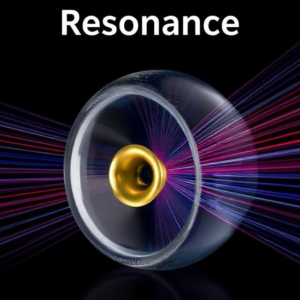1. What is Resonance?
- What is it?
- Resonance occurs when an object or system is forced to vibrate at its natural frequency, causing it to oscillate with larger amplitude (i.e., it moves more) than usual.
- It’s like when you push a swing at just the right time, so it goes higher and higher. The swing has a natural way it likes to move (its natural frequency), and when you push it at that frequency, you increase the swing’s movement.
- How it Works:
- Every object or system (like a guitar string, a swing, or a bridge) has a natural frequency at which it tends to vibrate when disturbed.
- If an external force (like pushing the swing) matches that natural frequency, the object starts vibrating with a much larger amplitude, and this is called resonance.
- Example in Real Life:
- Think of a wine glass. If you rub your finger around the rim of the glass at the right speed (matching its natural frequency), it will start to vibrate and can even break if the amplitude (strength of vibration) is big enough. That’s an example of resonance.

2. What is Resonant Frequency?
- What is it?
- The resonant frequency is the specific frequency at which a system naturally oscillates when disturbed. It’s the “special” frequency where resonance happens.
- Every object has a resonant frequency, like how a guitar string has a certain note it naturally vibrates at when plucked.
- How it Works:
- Imagine you have a swing again. If you push it at the natural rhythm of the swing (its resonant frequency), you make it go higher.
- If you push too fast or too slow, the swing won’t go higher, and you won’t get resonance. But if you match the resonant frequency, the swing moves more easily and with greater amplitude.
- Formula for Resonant Frequency: For simple systems like a mass-spring system, the resonant frequency
is given by the formula:
Where:
is the resonant frequency.
is the spring constant (a measure of how stiff the spring is).
is the mass attached to the spring.
- Example:
- Imagine a mass hanging from a spring. If you pull the mass down and let it go, it will naturally oscillate (bounce up and down) at a certain frequency. That frequency is the resonant frequency of the system.
- If you push the mass at exactly the same frequency it naturally oscillates, you get resonance and the motion of the mass increases.
3. Why is Resonance Important?
- Positive Uses:
- Musical Instruments: Instruments like guitars, pianos, and violins are designed to have certain resonant frequencies that make them produce specific musical notes.
- Microwave Ovens: Microwaves are designed to match the resonant frequency of water molecules, making them vibrate more and heat up the food.
- Engineering Structures: Engineers consider resonance to avoid situations where bridges or buildings might collapse if they accidentally hit their resonant frequency (like the famous collapse of the Tacoma Narrows Bridge).
- Negative Effects (Dangerous Resonance):
- Buildings and Bridges: If a building or bridge happens to vibrate at its resonant frequency, it can start shaking uncontrollably and might even collapse. This is something engineers try to avoid.
- Machinery: If machinery or equipment vibrates at its resonant frequency, it can cause damage or break down over time because of the large oscillations.
4. Real-World Examples of Resonance:
- Swinging on a Swing:
- When you push a swing at just the right time (its resonant frequency), the swing goes higher. If you push at the wrong time, the swing doesn’t go higher.
- Shattering a Glass with Sound:
- A singer can shatter a wine glass by hitting the glass with their voice at the resonant frequency of the glass. When the voice matches the glass’s natural frequency, the vibrations become very large and can break the glass.
- Bridges and Earthquakes:
- If an earthquake shakes a bridge or building at its resonant frequency, the vibrations can increase and cause the structure to collapse. This is why engineers must carefully design structures to avoid matching their natural resonant frequencies with common environmental forces like earthquakes or wind.
Summary:
- Resonance is when an object vibrates with a large amplitude because the external force matches its natural frequency.
- The resonant frequency is the natural frequency at which an object or system vibrates most easily.
- Resonance can be helpful in things like musical instruments and microwave ovens, but it can also be dangerous in structures like bridges or buildings if they hit their resonant frequency unintentionally.











